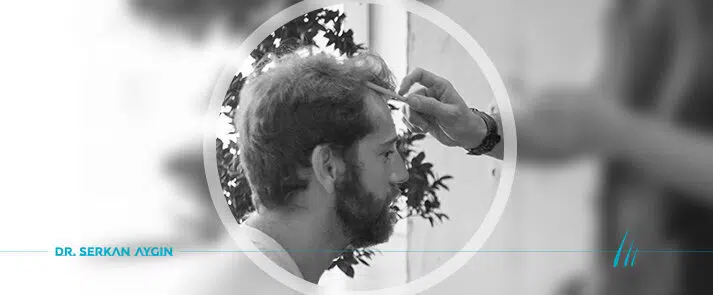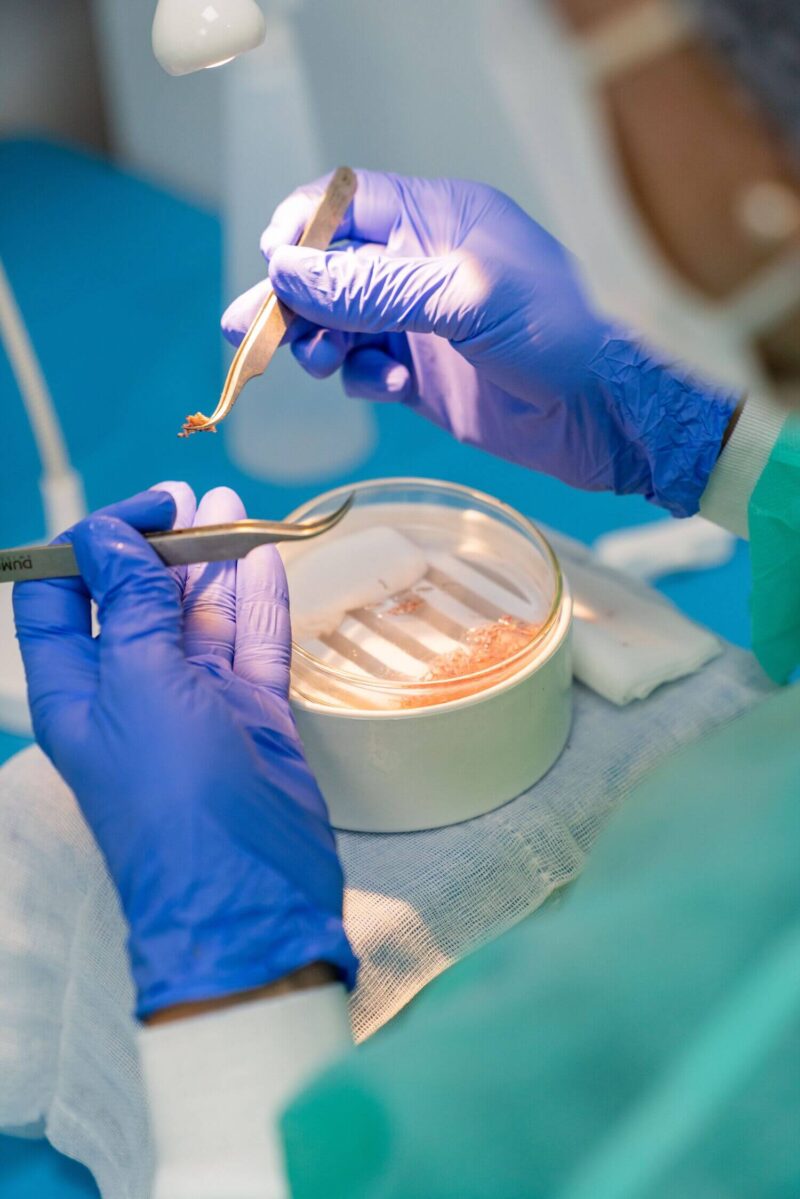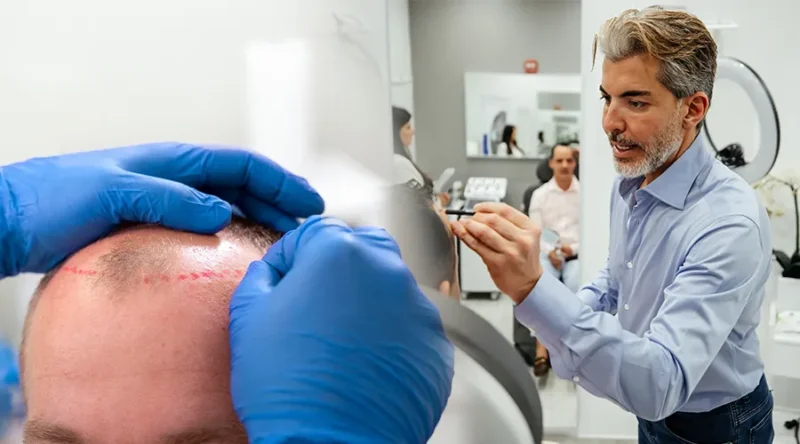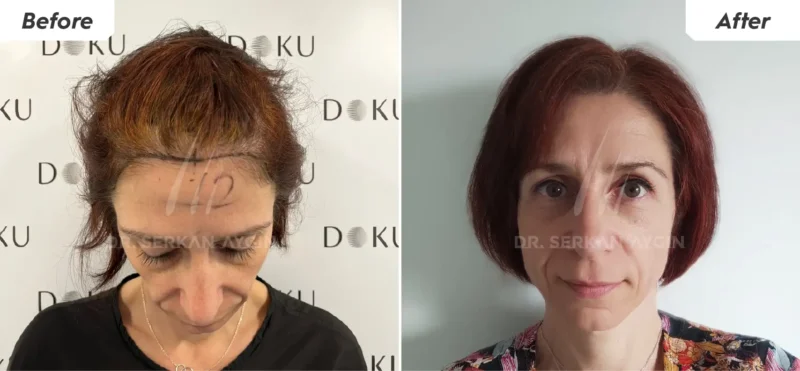The decision to undergo a hair transplant is life-changing, and choosing the right clinic will make the most of the results. This article will provide a professional comparison between a hair transplant in Turkey and a hair transplant in the UK, focusing on critical aspects such as cost, clinic reputation, surgical technique, quality standards and regulations.
To be sure, both countries have their pros and cons. Ultimately, you must think in a clinic-by-clinic basis. The key is to know what you want and whether you favour proximity at a premium or better prices at a distance.
Let’s take a look!
Hair Transplant Prices in Turkey vs. UK
Several factors influence the price of a hair transplant, regardless of location. These include:
- Number of grafts: More grafts come at a higher costs.
- Surgical technique: FUE and DHI, for instance, can have different pricing.
- Clinic reputation: Highly renowned clinics command higher fees.
- Surgeon Expertise: a dermatologist (MD) will charge more than a trichologist (technician).
- Packages: Bundles including post-operative care, medications, and accommodation will lower prices.
Here’s a quick comparison of average hair transplant cost in Turkey vs UK:
Feature | Hair Transplant in Turkey (Approx. USD) | Hair Transplant in UK (Approx. GBP / USD) |
Average Cost | $2,000 – $5,000 | £4,000 – £15,000 / $5,000 – $19,000+ |
Package Deals | Often all-inclusive | Typically procedure only |
In Turkey, the average cost of a hair transplant is £1,600 to £4,000. This price often includes accommodation, transfers, and post-operative care. This all-inclusive approach simplifies the process for international patients and contributes to the overall value proposition.
Conversely, hair transplant costs in the UK are quite… higher. A similar procedure in the United Kingdom can range from £4,000 to £15,000, or even more, depending on the case and the clinic. This higher price is influenced by higher labor costs, more expensive clinic overheads, and different healthcare insurance structures.
In short, the UK offers advanced medical facilities and qualified professionals, to be sure, but the financial investment is substantially greater.
Clinic Focus: Dr. Serkan Aygin Clinic (Turkey) vs. UK Clinics

In the United Kingdom, clinics generally adhere to the stringent regulations set by the Care Quality Commission (CQC). Many clinics in the UK pride themselves on offering personalized care and follow-up. But patients can expect consultations to come at an extra cost.
In contrast, the Dr. Serkan Aygin Clinic in Turkey has established itself as a global leader, drawing patients internationally from as far as Australia. Dr. Aygin himself is an experienced medical doctor, recognized for his expertise in both Sapphire FUE and Direct Hair Implantation (DHI).
The Turkish clinic’s business model includes packages that cover accommodation and transfers, simplifying things for international patients. And consultations are free, with online communication available 24/7.
Hair Transplant Techniques
Modern hair transplantation offers sophisticated techniques, each designed to achieve better results depending on the patient. Understanding what technique is best will allow you to laser-focus on clinics performing what you want.
Follicular Unit Extraction (FUE)
FUE involves extracting individual hair follicles from a donor area, typically the back or sides of the head, using a micro-punch tool. These individual grafts are then implanted into thinning or balding areas. This widely popular technique is minimally invasive, leaves no linear scar, and boasts a relatively quick recovery period. It’s an excellent option for a broad range of hair loss patterns.
Direct Hair Implantation (DHI)
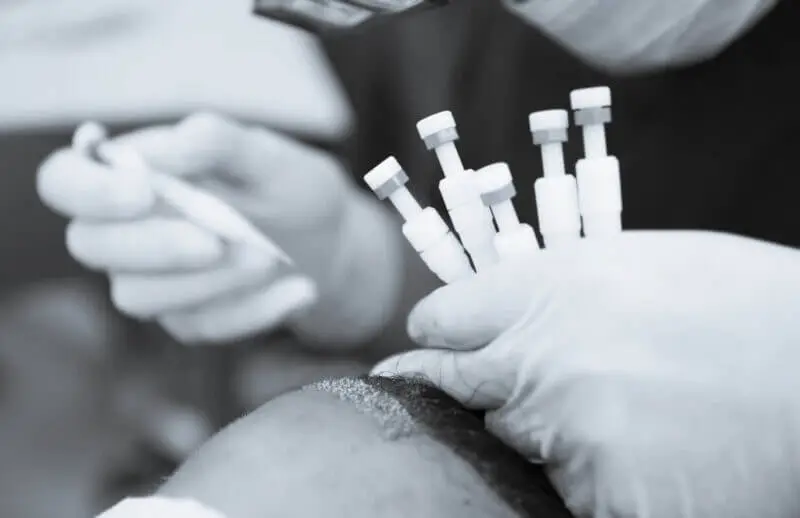
DHI allows follicles to be extracted and immediately implanted. Direct implantation minimizes the time grafts spend outside the body, maximizing survival rates and leading to denser results. Using a gadget called a Choi Pen, the Choi utensil also grants precise control over the depth, angle, and direction of each graft.
Long DHI Technique: Dr. Serkan Aygin’s Innovation
The Long DHI technique, pioneered by Dr. Serkan Aygin, is an approach specifically designed for patients who prefer not to shave their head. This method allows for the transplantation of longer hair, concealing the procedure for those seeking confidentiality. It maintains the precision and high success rates of DHI.
Robotic Hair Transplant
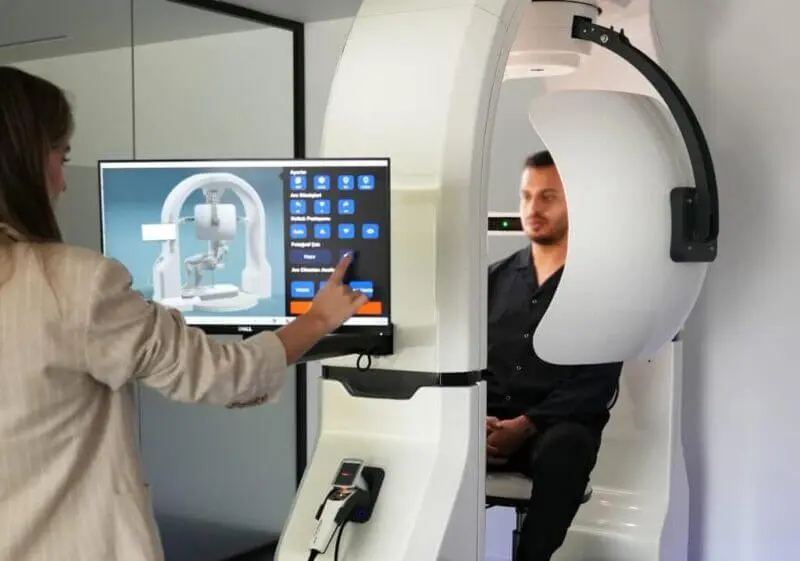
Robotic hair transplants utilize 3D imaging and AI for extraction (and sometimes implantation) of follicles with extreme precision. The robot helps identify the healthiest grafts and performs extractions with consistency, reducing human fatigue and potential error. While still requiring human oversight, it enhances efficiency as a good, well-trained assistant.
Stem Cell Hair Transplants (Emerging)
Stem cell hair transplants are an emerging field to regenerate hair growth by utilizing your body’s own power. Still largely experimental, this research explores using stem cells to activate dormant follicles and stimulate new hair. It holds great promise for less invasive and more natural solutions.
Hair Transplants for Women
Hair transplants for women often require a different approach due to diffuse thinning rather than bald spots. Techniques that don’t require shaving, like DHI and Long DHI are preferred to maintain hair length, focusing on increasing density and restoring hairlines. The consultation considers female hair loss causes and aesthetic goals.
Quality Standards and Regulations: Turkey vs. UK
Both Turkey and the UK have optimal healthcare standards, but their approaches to oversight and accreditation differs.
Turkish Healthcare: Standards and Oversight
Turkey has made significant investments in its healthcare infrastructure, particularly for medical tourism. The Turkish Ministry of Health is the primary regulatory body, overseeing all medical facilities and personnel. Clinics specializing in hair transplants, like the Dr. Serkan Aygin Clinic, are required to adhere to strict licensing and accreditation processes.
Many clinics in Turkey also seek international accreditations, such as those from the Joint Commission International (JCI). While the sheer volume of clinics might make selection challenging, reputable ones operate under rigorous medical protocols.
UK Healthcare Regulations
In the United Kingdom, the healthcare system is highly regulated, with the Care Quality Commission (CQC) acting as the independent regulator of all health and social care services. The CQC monitors, inspects, and regulates clinics to ensure they meet fundamental standards of quality and safety. This includes hair transplant clinics, which must comply with specific guidelines related to patient consent, hygiene, equipment, and staff qualifications.
The General Medical Council (GMC) also registers and licenses doctors in the UK, ensuring they meet professional standards. This stringent oversight provides a high level of assurance for patients receiving hair transplants in the UK.
Choosing a Reputable Clinic
Regardless of whether you choose Turkey or the UK, selecting a reputable hair transplant clinic is crucial. Key indicators of a trustworthy clinic include:
- Accreditation and Licensing: Verify that the clinic and its medical professionals are properly licensed and accredited by relevant national and international bodies.
- Surgeon’s Experience and Qualifications: Research the surgeon’s background, years of experience, and specialization in hair restoration.
- Patient Reviews and Testimonials: Look for authentic patient feedback and before-and-after photos.
- Transparency in Pricing: A reputable clinic will provide a clear breakdown of costs with no hidden fees.
- Comprehensive Consultation: A thorough initial consultation should assess your hair loss, discuss realistic outcomes, and outline the treatment plan.
- Aftercare Support: Inquire about post-op care and follow-up support. This is vital for results and recovery.
Post-OP Aftercare
Robust aftercare is crucial for successful outcomes. Both Turkish and UK clinics provide post-op support, though their approaches differ based on whether you’re a local or international patient.
Comprehensive Aftercare in Turkey
In Turkey, clinics like the Dr. Serkan Aygin Clinic offer structured aftercare, often included in comprehensive packages. This typically starts immediately post-op with detailed instructions on scalp care, red light therapy, PRP, hair wash and medication.
Aftercare in the UK
UK hair transplant clinics also provide support for healing. They give post-operative instructions on managing swelling, scabbing, and resuming normal activities. Follow-up appointments are generally in-person, which is convenient for local patients. UK clinics provide a clear pathway for ongoing support during recovery.
The initial days after a hair transplant are vital. Patients are advised to avoid touching the transplanted area, sleep with their head elevated to minimize swelling, and gently wash their scalp as instructed. Refraining from strenuous exercise, alcohol, and smoking is also crucial. Both destinations emphasize these steps, but ongoing support logistics are a key differentiator.
Making Your Decision
Choosing between a hair transplant in Turkey or the UK is a deeply personal decision. Both destinations offer the potential for excellent results, but they differ in cost, logistics and patient experience.
Key Factors for Your Hair Transplant Journey
Consider these points for your decision:
- Cost vs. Proximity: If affordability is your priority, Turkey is the clear choice. However, if you prefer local follow-ups and hate travel, the UK might be a worthwhile investment.
- Clinic Specialization: Turkey’s high volume of hair transplant procedures, particularly in clinics like the Serkan Aygin Clinic, means surgeons and teams often have more experience with advanced techniques. UK clinics offer strong regulatory oversight and personalized local care.
- Aftercare and Follow-up: Assess your comfort with remote follow-ups versus in-person appointments. While Turkish clinics provide initial aftercare, ongoing physical check-ups are more straightforward in the UK.
- Research and Due Diligence: Regardless of location, thorough research is non-negotiable. Verify clinic accreditations, surgeon qualifications, and read patient testimonials. Look for transparent communication and realistic outcomes.
Ultimately, the goal is a successful and satisfying hair restoration. Weigh the benefits and drawbacks of each option, ensuring it all aligns with your expectations for quality, safety, and experience.
Frequently Asked Questions
Is a hair transplant painful?
During the procedure, local anaesthesia is used, so you won’t feel pain. You might experience some mild discomfort or pressure. Post-surgery, pain is generally manageable with prescribed painkillers and usually subsides within a few days.
How long does recovery take?
Initial healing, where swelling and scabbing subside, typically takes 7-10 days. The transplanted hairs will often shed within 2-4 weeks, which is a normal part of the process. New hair growth usually begins around 3-4 months, with full results visible between 12-18 months.
Are the results permanent?
Yes, the transplanted hair follicles are typically taken from areas of your scalp that are genetically resistant to balding. Once transplanted, these follicles retain their characteristics and continue to grow naturally and permanently.
What are the risks?
Like any surgical procedure, hair transplants carry some risks, though they are generally minor. These can include swelling, bruising, temporary numbness, itching, or minor infection. Choosing an experienced surgeon and a reputable clinic significantly minimizes these risks. Rare complications might include poor graft survival or an unnatural appearance if not performed expertly.


